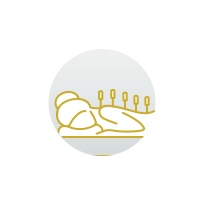Vitex increases progesterone levels by increasing LH (luteinizing hormone) levels, and it suppresses prolactin levels – the result is increased ovulatory cycles. This sounds like a perfect scenario for PCOS sufferers, but there’s a problem. Vitex can actually worsen PCOS for some because their LH levels are already high. If you know your LH level is high (if you don’t know – ask for a hormonal panel blood test from your doctor), you should not use Vitex. Most women have the kind of PCOS that is insulin-resistant and comes with high LH, and they should avoid Vitex.
When you should take Vitex if you have PCOS
If you have PCOS with normal LH levels and high prolactin levels, you might consider using Vitex. You can have your prolactin levels tested by your doctor. This kind of PCOS has a different root cause, usually inflammation from allergens like dairy and gluten or as the result of using the birth control pill. Vitex in this case can help to suppress prolactin levels and increase ovulatory cycles.
What to take instead of Vitex to manage your PCOS
There are several kinds of PCOS, but these two supplements will work for any woman with the condition.
Cinnamon – Cinnamon is a proven natural treatment for insulin-resistant PCOS. You can also add cinnamon to your oatmeal, eggs or beans and make it part of your meals.
Magnesium – Try a topical form of magnesium like those created by Ancient Minerals or the powdered form from Natural Calm. Magnesium is an essential mineral that most of us are deficient in, but it’s a proven treatment for improving insulin resistance.










